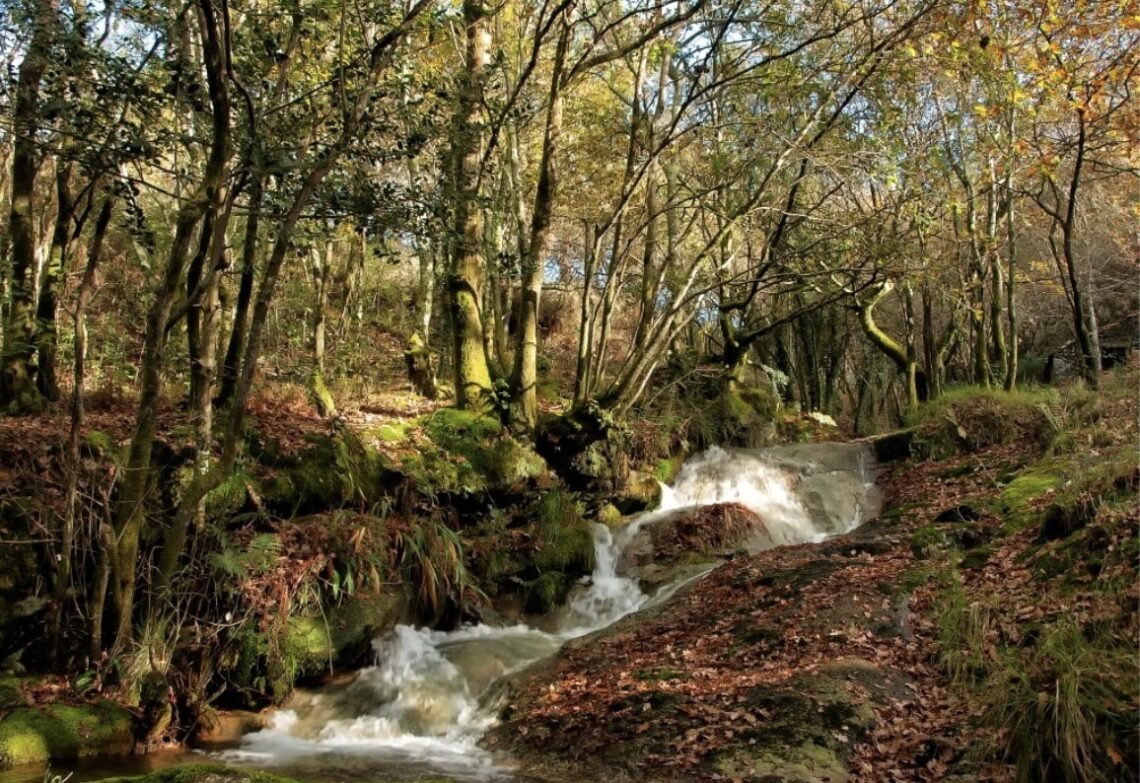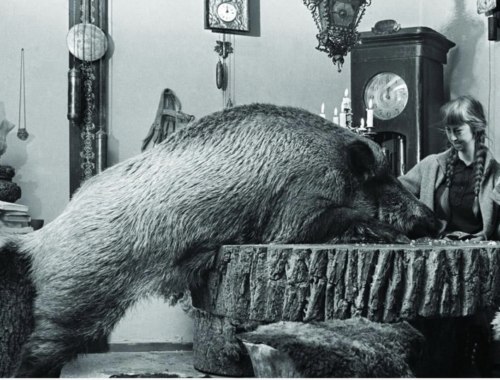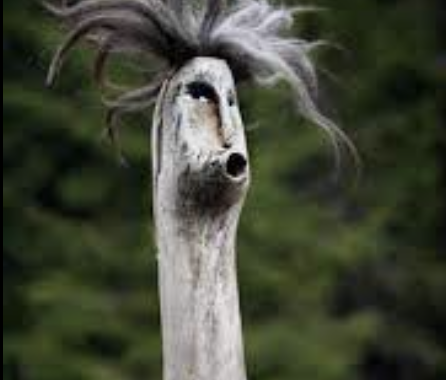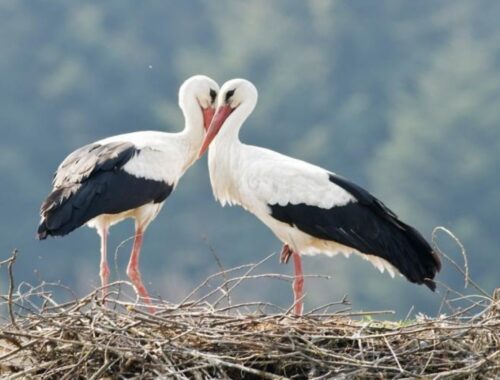
Grass-roots Reforestation in Galicia
Storm Marinho is on its way out, as I write this. We had some damage. The covered eating area by the cabin got torn down and part of the EPDM got peeled back from the green roof of our house, but that could have been avoided with better maintenance. The winds were the strongest we’ve experienced here, apart from that one time when Dean had left to drive a friend back to the airport and a sudden gust took down the greenhouse in 10 minutes. Nothing else was disturbed that day and I had been forewarned and put protection all around the house, but I forgot about the greenhouse. I’m reminded of that now, as our dragon is protective and I’m pretty sure that the wind can differentiate between what we’ve put our energy into and commercial and unnatural things and materials.
People say these intense storms are all due to man-made climate change and that’s true, but nothing to do with the use of fossil fuels. The destructive storms, high winds and flooding we are experiencing are almost entirely due to deforestation, geo-engineering and storm augmentation. The hills I can see from my window used to be covered in trees and now almost half of them are scalped. With fewer trees to regulate the temperature and rain, the damming of the rivers and the poison spraying, it is difficult for the Earth to manage the winds. Drought, fires and floods are the consequence of these actions. Far from being angry or vengeful, the Earth has already shifted into the regenerative phase of reset, in which destruction serves re-creation.
Galicia is known as Green Spain and there is a lot of greenery here around 30% forest cover, much more than in other parts of Spain, but much less than there used to be. Between 2001 and 2023 Galicia lost 34% of its tree cover and around 20% of the loss is due to fires, the rest is cut down for profit. Sadly, only 10% of the forest cover is native. However, what characterises ‘forestry management’ in Galicia is that the state has the‘authority’ to determine how the woodlands are managed, even though 98% of the woodlands are privately owned,.
Spain has been occupied by the Phoenicians under many names and rules since around 800BCE and was used as a strategic base for colonisation of the Americas. Between 1836 and 1950 around 15% of working age men emigrated to the former Spanish colonies and most never returned. Up until the mid-nineteenth century the forests of Galicia were owned individually or by villages in a form of private-collective ownership. During the same period the government confiscated both Church and privately owned woodland and made common ownership, in which the property is owned by all the neighbours, illegal. Despite the transfer of legal ownership to the municipalities, many people carried on their traditional small scale farming practices in which managing the forests was part of their way of life.
Meanwhile, native woodlands were ripped up and replaced by the more profitable pine and eucalyptus, increasing the fire hazard. A moratorium on new eucalyptus plantations was agreed in 2021, along with a commitment to reduce the existing eucalyptus by ‘up to 5%’, but the damage has already been done and recovery is slow. The combined pressures of fires, state interference and absentee ownership have taken their toll on the landscape and the rural communities. There is nothing to hold young people here anymore.
“In the 1940s, 1950s and 1960s, the creation of consortiums between the new forestry instruments of the Franco regime, the Patrimonio Forestal del Estado (State Forestry Heritage), and the town councils not only prevented management by the local residents, but also substantially altered the balance of the agro-ecosystems, replacing multi-functional management with an autarkic, productivist forestry orientation that excluded any other use. Local communities could not prevent expropriation but responded against these policies, making forest management by the PFE difficult or even impossible.
This underground conflict was the reason why the dictatorship itself returned many forests to the local communities, with a law that was passed in 1968. Forestry interventionism was the most lasting legacy of the dictatorship in terms of the territorial management. It irreversibly altered the territorial balance, making many farms unviable and expelling many local inhabitants who needed the forests. It also played a central role in the adoption of the industrial agriculture model in Galicia in the sixties and seventies. In this way, the communal forests today have little to do, with few exceptions, productively with the forests that existed before 1936.”
In Galicia, the land is parcelled up into many small lots as parents must divide the land equally between their children on their death, regardless of where the children live or what their own interests are. Very often the land is not adjacent to the owners homes and in many cases the owners emigrated long ago. State interference here means that all pine, eucalyptus, brambles and wild roses, blackthorn, broom and anything considered to be ‘biomass’ must be cleared for 50M around all homes. This is for ‘fire prevention,’ although everyone knows that the ‘wildfires’ that caused so much destruction were started deliberately.
We had to get permission to cut down a few acres of pine trees on our own land, because they were within 50M of the house, but there is no requirement to replant any trees. We replanted with native trees, but hardly anyone does that. The land across the track from our house is owned by four different people, two of whom are overseas and one a farmer in the area. He came with his tractor and tore everything down, including the hedgerows and the 50 trees we had planted on his lot with his permission. The needs of wildlife, birds and young trees were overshadowed by the threat of a fine. He works hard and has to deal with Brussels and Lugo telling him how to run his farm. It takes a different set of priorities and a lot of time and energy to clear selectively by hand, as we know too well.
Everybody here sees the interference and nobody likes it, but they are also terrified of the forest fires. People remember that the Franco Regime stole their ancestral lands and no one here saw the ‘benefits’. Now they/we have to work our arses off to clear shrubs and non-profitable trees because of the fire risk that the government created. Our natural boundary hedge of blackthorn, gorse, wild rose, broom, bramble and honeysuckle is banned and must be removed. An acceptable course of action hasn’t yet shown up and the threatened fines are extortionate. I question myself and what I can do all the time and, although the local community has been more than welcoming to us, it is as slightly odd outsiders. We have a different perspective, valuable in its own right, but we have not lived here for generations and we’re not inclined to throw our opinions out uninvited.
So many of us no longer live in our ancestral lands, yet, when I look deeply into the situation, I find that all roads lead back to the woods. We can engage with Nature, where ever we live and touch all of Nature everywhere. The Nature Powers need this interaction to know what we want; they do not have free will or intention of their own and their future rests on us, just as much as ours is with them.
In the next parish over from us, the ‘commoners’ have regained collective ownership and management of their ancestral lands, known as the Froxán Commons. We cannot initiate a similar project here, but we’d like to see something similar emerge and would support it in any way we can.
“Since 1977, the Froxán Commons has been recognized as a ‘monte veciñal en man común'(‘common hand community land’). This is a consuetudinary land ownership status, recognized in Galician and Spanish law. The common land tenure in Froxán can be traced back to medieval and modern manorial charters, issued in 1409, 1527 and 1709, defining the boundaries of community lands and the manorial obligations, although both the institution of Galician common land and the occupation of what today is Froxán predate Roman invasions.
The inhabitants of Froxán collectively extinguished the manorial ties in 1928, buying off the lands for the sum of 6.049 pesetas. However, this ‘manorial redemption’ agreement was not respected by the State, which took hold of the common lands, incorporating them into the Public Woodlands Catalogue in the 1930s and 1940s. This severely restricted traditional rights of use, and in particular communal silvo-pastoralism (a complementary combination of land-uses, integrating trees and livestock grazing). Lands were handed over to mining companies, which held concessions over the community territory, and to the State Forestry Service, which established its own plantations prohibiting silvo-pastoralist practices and imposing heavy fines on the commoners. Mining activities resulted in severe environmental degradation and land disputes that continue today. Invasive forest species, including Acacia and Eucalyptus, were introduced during the same period, and important habitats such a peat wetland were damaged by forced drainage.
Across Galicia, social pressure against forced reforestation programmes led to the legal recognition in 1968 of ‘common hand’ community lands. On April 14 1975, seven months before the death of the Dictator Franco, the entire Froxán community signed a petition to the Civil Governor demanding the devolution of common lands. This occurred in defiance of the Municipality, which legally held the property at the time. In 1977, the Froxán Common Woodlands were formally recognized, and the community gained legal status soon after. Direct assembly governance was established, with one representative of each house making up the collective assembly body. Commoner status is not dependent on property ownership or inheritance, but on effective residency and participation in the village community and collective decision-making. In 2002, the last remaining ties with the Public Administration were broken, finalizing the Forestry Contract that had been inherited from the dictatorship period, and gaining full self-governance of the community lands.”
https://www.iccaregistry.org/en/explore/Spain/froxan-common-woodlands
Here is a short video about this community. I especially like how they talk about living in harmony with the land and not just seeing it as a profit centre – the latter being the land management approach from Brussels and Lugo, the state interference in affairs that are none of their business.
In some areas of Galicia, people are returning to the pastoral way of life and rediscovering its benefits in fire prevention and as a sane and healthy way to live. It would be good to have such neighbours here!
The Arc of the Phoenix
You May Also Like

Simona Kossak and Great Mother Boar
May 6, 2024
Rewilding with Kindness
March 1, 2024

